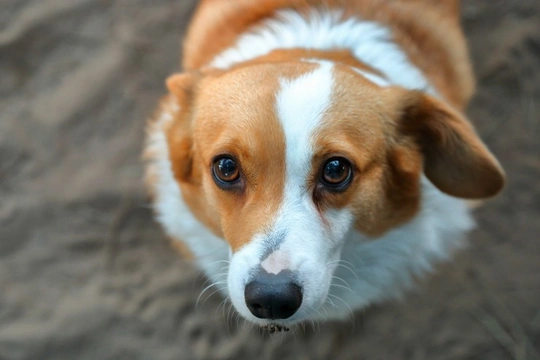
Why Does My Dog Flinch When I Pet Him?
If you have ever gone to stroke or pat a dog on the head and they appear to wince, duck or otherwise appear worried about your action, it is very easy to assume that the dog has potentially been smacked on the head by someone before, and this is manifesting as a protective response.
However, this is just one potential cause of wincing or ducking-otherwise known as being head shy-and it is not even the most likely cause of such behaviour! If your own dog is head shy and yet you have owned them since they were small and know that they have never been hit on the head or mistreated, this can be very frustrating. However, learning to understand some of the many and often complex reasons behind why your dog may duck or avoid being touched on the head can help to provide an insight into this behaviour, and why your dog may be exhibiting it.
In this article, we will cover all of the main and most common reasons behind why a dog may appear to flinch when you attempt to touch their heads, and what they mean. Read on to learn more.
Fear of a smack
Whatever your dog has done, you should absolutely never smack them on the head-this is the fastest and most effective way to make your dog head shy, and just doing this once can trigger the flinching reaction every time you reach for their head in the future. It is certainly worth bearing in mind that being smacked on the head in the past can cause head shyness in future, but this is only the case for a small number of dogs, and unless you know that your dog has been hit on the head before, it is important to consider other issues.
Submissive behaviour
Dogs tend to be submissive to humans-and even if they are not directly submissive, simply seeing people as the leaders of their pack is enough to manifest a range of nonverbal cues in your dog’s actions that demonstrate their yielding of the alpha position.
If your dog ducks their head, flinches or otherwise appears to be head shy, this may be indicative of a submissive behaviour; your dog does not want to move their head away as this may be seen as defiance, so they will passively await your next move.
A natural instinct
If someone throws something at you unexpectedly, you will likely attempt to catch it-and sometimes, if you drive under a low bridge, you might inadvertently find yourself ducking! These are instinctive movements that we perform continually without really thinking about, and the same is true for your dog. It is highly likely that your dog’s flinch or wince is an automatic movement-for instance, if someone waved their hand suddenly in front of your face, you would likely wince or close your eyes too!
Speed and position
If you are looming over your dog and move quickly to touch their heads, this is much more likely to lead to flinching than a slower approach from a parallel position. It can be daunting for a dog-particularly a small or shy one-to have someone standing over them and making sudden movements, and so your dog will likely respond instinctively again, as they would in the scenario outlined above.
Avoid standing right over your dog and making sudden movements, and you may well find that your dog is fine with your approach.
Ear mites
Ear mites are all too easy to pass from dog to dog and can also be very hard to eradicate, and dogs may suffer from ear mites for some time before you as their owner will realise it. If your dog does have ear mites, they will likely be very reticent to have their head or ears touched, and so may move away, shake their head or flinch when you attempt to stroke their head.
Ask your vet to check your dog out and prescribe the necessary treatment if ear mites are identified.
Health issues
Dogs can get the odd headache from time to time, just like people can-and if your dog does have a headache, the chances are that they will not be keen to be patted or touched on the head. Some chronic hereditary health conditions that affect the head and spine can also lead to head shyness, as a touch-even a light touch-can bring pain. Syringomyelia is a good example of this, so it is worth getting your dog checked out by your vet if they appear to hate having their head touched and you cannot ascertain why.
A better approach
Approaching your dog from the side and stroking the sides of their face and neck is a better approach, as this allows your dog to see where you are and what you are doing. When your dog responds and accepts your touch, you can likely move on to stroking their head too without a problem!



